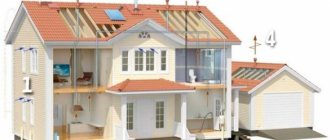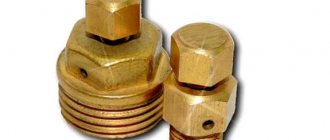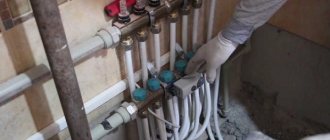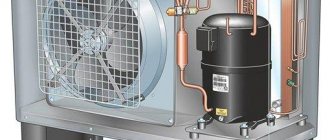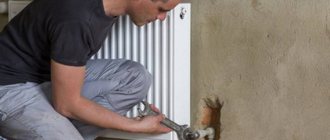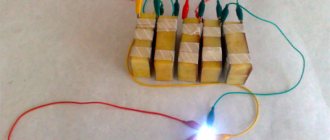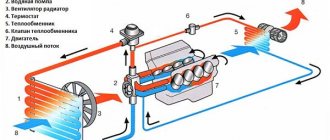How to reduce humidity?
You can reduce the humidity in the room using several methods. One of the most common and popular is conventional room ventilation. But in winter, it is better not to use this method, because you can aggravate the situation. It is important to ventilate the living area at least once a day, for ten minutes. There are several other ways to reduce dampness in your home. First, the use of exhaust fans. They must be installed in rooms where high humidity is observed (bathroom, sauna, kitchen). Secondly, an oil-based heater will also be a good helper in this situation. It is best to take a heater model in which a fan is already built in. Thirdly, the use of an air conditioner also helps to reduce the humidity in the room. Indeed, in addition to the fact that this device maintains the same temperature in the room, it also promotes ventilation. Today, there are a variety of models of air conditioners, which have a variety of functions. The use of such improvised methods to reduce humidity in the house should greatly simplify your task.
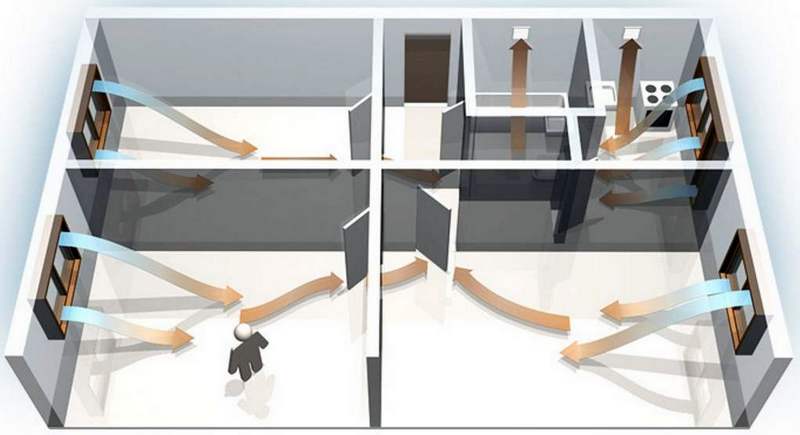
How to reduce indoor humidity
Identify the source of dampness in your home and take action to eliminate it. You can dry the air in the apartment with the help of specialists:
- call a plumber;
- call a repairman or install a high-quality heating system;
- order wall insulation from the outside;
- order the repair and installation of window panels;
- hire a master to repair or install a high-quality hood;
- call the master to seal the seams or cracks.
You are able to eliminate other reasons and dry the air in the room yourself:
- make frequent ventilation;
- dry your laundry on the balcony or outside;
- buy an air dryer;
- buy desiccant tablets;
- buy an additional device for heating the room;
- if possible, allow natural sunlight to illuminate the room.
Do you know what the optimal humidity should be in a nursery? If not, here's a helpful article on the topic. And we also have a detailed article on the norms of humidity in the apartment.
Damp control
It is possible and necessary to take measures to reduce the content of water vapor in the air. It is not only about improving living conditions, but also about taking care of your health. Both the house itself and the things in it will remain safe and usable for a long time in a dry atmosphere.
Elimination of the causes of dampness on the ground floors
For residents of the first floors, the main reason for dampness in the apartment is the basement constantly flooded with water. Utilities should deal with the elimination of such emergency conditions. If they do not cope with this, or defects lie in the foundation of the house, residents have to solve the problem on their own.
It helps the device of a coating or gluing waterproofing of the floor, using waterproofing plasters. At the same time, you can achieve high-quality insulation of the ceiling in the basement.
On the upper floors
The problematic place of the apartments on the upper floors is the roof. A flat roof without slopes often leaks. Waterproofing the ceiling will not help here, as the moisture will simply go into the walls. Better to insulate the floor in the attic or technical floor.
In a private house
A private house is exposed to moisture literally from all sides.To create a comfortable environment in it, first of all, you need to take care of arranging the correct drainage system on the site. This will help lower the water table and reduce the risk of dampness in the basement.
Much attention should be paid to the external and internal waterproofing of the foundation and basement.
Finally, the condition of the roof and gutters directly affects the dampness of the house. On all floors, moisture penetrates the walls due to poorly sealed interpanel seams. This construction flaw can only be corrected with the help of professional repairmen.
Actions that each person can do at home: dry clothes on the balcony or purchase a washing machine with a drying function, as well as turn on heating and air-drying appliances in time.
Installation of forced ventilation and frequent ventilation
Synthetic finishing materials and sealed double-glazed windows disrupt the natural air circulation in the apartment. Moisture accumulates in the room with no way to escape. On the upper floors, residents also suffer from poor draft in the ventilation shafts.
Airing helps well in such a situation, but in the cold season it is impossible to keep the windows constantly open. It is recommended to install modern ventilation mechanisms in plastic windows, for example, the so-called alpine window.
This device is able to ensure the exchange of indoor and outdoor air when the windows are closed.
Another useful device is hygro-controlled grilles, which are installed in ventilation ducts to regulate the intake air flow depending on humidity.
Installing forced draft ventilation requires effort and cost. But it completely solves the problem of removing humid air from the apartment. Such ventilation consumes energy and is slightly noisy, but it is very useful. The minimum option for forced ventilation is the installation of an electric fan in the ventilation duct of the kitchen.
Recuperators are built into the exhaust systems. In them, the cold air coming from the street heats up in the process of heat exchange with the removed air, which is already warm from the apartment. This device helps to save energy for space heating.
Additional heating and thermal insulation
The air in a heated room feels drier. Additional heating of an apartment is an effective and widely available way to combat dampness. Any source is suitable for heating: sunlight, underfloor heating, a heated air conditioner or an oil radiator. An electric heated towel rail will help create a dry atmosphere in the bathroom. Additional heating devices will easily dry the air in the room and get rid of the musty smell.
If the moisture has already been absorbed into the floor and walls, you need to warm it up longer with the use of powerful devices. Sometimes, despite drying out, repairs are inevitable.
Heating can be dispensed with or less intense with proper wall insulation. Thermal calculations show that a thickness of 100-150 mm extruded polystyrene foam insulation will provide sufficient insulation for any wall.
The second option for effective thermal insulation is a vapor-permeable insulation, for example, mineral wool or a ventilated facade.
Repair as a means to combat dampness and odor
For a very damp room, drying alone is not enough. Mold and mildew deeply affect the walls, and repairs are indispensable.
For modern renovation, try to choose natural finishing materials. They are vapor-permeable and remove moisture from the room to the outside.
- If the moisture is caused by flaws in the building structure, the walls must be insulated not only from the inside, but also from the outside, and the seams at the joints of the panels must be sealed.
- In a potentially humid environment, grout and plasters with antifungal additives are used.
- The walls are treated with anti-mold agents and then re-plastered.
- Heavily affected by fungus or deformed floors are replaced with new ones.
If possible, give up plastic windows or equip them with modern ventilation devices. It is better to place furniture at some distance from the walls so that it does not block the air flow to the ventilation openings.
Devices - air dryers
Technical means are widely used to remove moisture from the air. For a kitchen or a room, it is enough to purchase a dehumidifier with a capacity of 10 liters per day. If a humidity sensor is built into the device, it will be able to adapt itself to changing external conditions.
This dehumidifier automatically monitors the state of the atmosphere and regulates the humidity in the room. The air will not dry out, and excess electricity will not be consumed.
It is convenient to have a portable dehumidifier to use alternately in different places.
The air in the bathroom is well dried with a heated towel rail, if there are no constantly wet towels hanging on it. The air conditioner also successfully reduces the humidity level. Finally, in the fight for dehumidification, heating devices are indispensable. The increase in their useful surface and the correct regulation of the heat supply have a beneficial effect on the climate in the apartment.
Application of cooker hoods
When cooking, liquids are intensively evaporated into the air. Therefore, the kitchen is one of the wettest areas in the apartment. There is usually a ventilation duct in the kitchen. But without the use of forced ventilation, its power may not be enough.
Therefore, electric kitchen hoods are installed above the stove, which direct the fumes into the ventilation. The power of the device must be suitable for the amount of vapors and the size of the room. For a kitchen in which food is prepared for the whole family every day, an extractor hood with a capacity of 500 m³ / hour will be sufficient.
For the causes of dampness in rooms, for methods of dealing with it, see the video.
How does a dehumidifier work
There are several types of indoor dehumidifiers. They differ in principle of operation and design features:
- evaporative - driving streams of moist air through the evaporator, returns it dehumidified back to the room, and excess moisture flows into the tank;
- adsorptive - the air passes through the adsorbent, which absorbs excess moisture; in parallel, with the help of hot air, the adsorbent dehumidification process takes place. The air comes out back not only dry, but also purified;
- assimilation - takes moist air masses from the room and throws them out into the atmosphere.
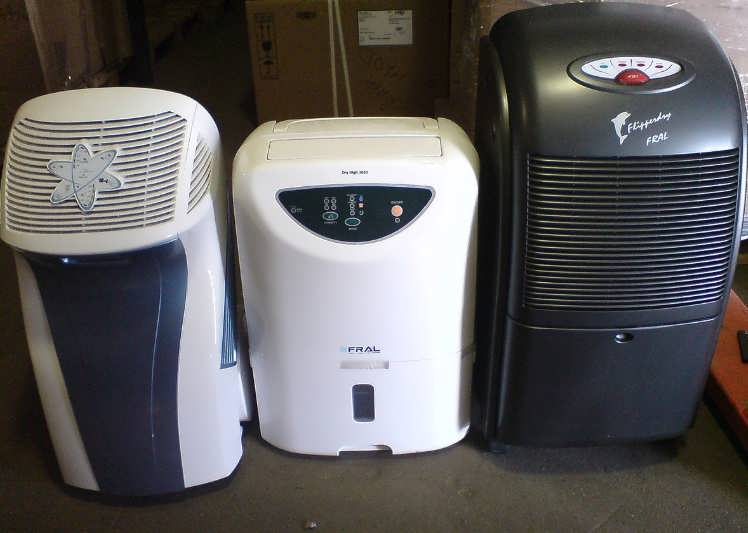

Dehumidifiers
DIY instructions for creating a condensation dehumidifier
The most popular type of dehumidifier for an apartment is based on condensation - the release of water from the air when the temperature drops. An example of condensation is dew fallout, it is this process that is reproduced in a technological way.
The moisture trap cools the air like an air conditioner, but without removing heat outside the room.
Equipment
Components of the device and principle of operation:
- the evaporator is a cold heat exchanger (in it the air is brought to a temperature below the dew point);
- the condenser is a hot heat exchanger (in it the dried air is reheated and released outside);
- storage (condensate flows into it).
A home appliance can be easily constructed from an old refrigerator with a working compressor. For assembly you will need:
- unused refrigerator;
- plexiglass with a thickness of more than 3 mm;
- household fan with power from 100 W;
- plastic grate (pressure head);
- fasteners (screws);
- sealant (electrical tape, silicone);
- tools (screwdrivers, screwdriver, hacksaw for metal).
From these components, the device must be assembled according to the instructions.
Assembly
It is necessary to carry out the work in steps:
Refrigerator desiccant
- First of all, you need to remove the doors from both chambers of the refrigerator.
- Next, you need to measure the dismantled parts and cut out similar sheets of plexiglass.
- From the borders of the sheets, you need to step back 35 cm and cut out the holes for mounting the fan.
- At the next stage, it is necessary to install a grate and a fan in the hole (it should direct the air into the chamber), fix it with self-tapping screws.
- Drill holes at the top of the plexiglass sheet.
- After that, you need to install the sheet in place of the doors of the refrigerator compartment and freezer.
- With the help of a sealant, you need to close the cracks in the area where the door adjoins the body.
- At the finish line, you need to power the camera and fan.
The device connected to the network will direct the air into the chamber with the operating compressor, where the gas will be cooled, becoming drier. The processed air is discharged outside through the holes at the top of the plexiglass sheet. In stationary devices, it is not necessary to provide a container for collecting the dropped out liquid, the device can be connected to the sewer to drain condensate.
Advice! In order not to overcool the air in the room where the home-made dehumidifier-air conditioner works, experts advise placing the heater opposite. It must be positioned so that the outgoing flow enters the additional device.
Experts note the effectiveness of self-made devices, but they also have a number of limitations. If drying is used in a cold room, the unit can run idle: when trying to additionally cool it, the condensate will freeze.
You can dry the air in a humid room in various ways. Sometimes ventilation or well-planned ventilation helps; with constant waterlogging, the use of air dryers will be required. These devices migrated to private housing from production facilities, where they have established themselves as effective fighters against air humidity. Experts recommend that people who are faced with the problem of a “wet” atmosphere at home or at work first test homemade desiccant devices, and only then evaluate the need to purchase a device in a home appliance store.
How dehumidifying tablets work
The kit consists of an absorbent tablet that fits into a special holder. A tablet of numerous crystals that absorb excess moisture from the air, they are placed in a plastic case.
By the way, we also recommend to your attention useful material about plants that purify the air in the apartment.
During operation, the tablet works as an adsorbent that absorbs liquid from air masses. Subsequently, the moisture is transformed into a saline solution, which flows into a reservoir to drain the accumulated liquid.
This entire structure must be placed on a flat surface at a distance of at least 10 cm from the nearest wall. Do not install it near a heat source. It is recommended to choose places that are not accessible to children and pets. One device is enough for a room up to 20 m².
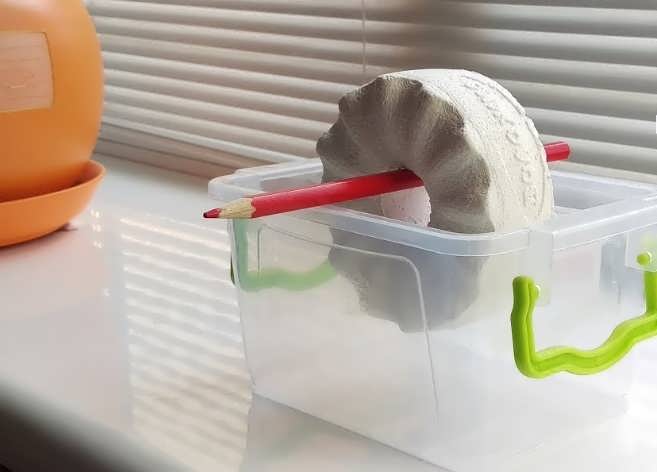

Desiccant tablets
Air-drying tablets also effectively counteract the spread of fungal mold spores, eliminate the effect of condensation on the surfaces of windows, walls, and household items. Eliminate the unpleasant odor of dampness in the house. Change the tablets every 2-3 months, after they are completely dissolved.
Expert opinion
Nikonorov Vladimir Alekseevich
Our expert. Air conditioning and ventilation specialist with 10 years of experience.
Ask a Question
Use absorbent tablets in areas most prone to condensation - bathroom, kitchen, garage, attic and basement. The use of a drying device in these "hazardous" areas will be most effective.
How does professional equipment that allows you to dehumidify indoor air work?
The surest way to get rid of annoying dampness in your home is to get and buy a professional dehumidifier. Especially when the other methods have failed.
There are two types of professional dehumidifiers:
- stationary dehumidifier - installed on the wall, in the future it will be impossible to move it, so choose the right place for mounting;
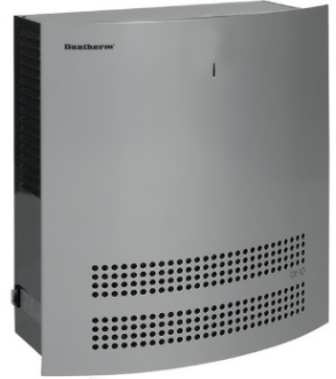

Stationary dryer
- portable - it is not attached to the surface, it is easy to use and mobile, it has a small size, so it is easy to move it to the required room.


Portable dehumidifier
Why is dampness dangerous?
It is interesting that our body reacts to dry air very quickly - there is a perspiration in the nasopharynx, dry skin is observed, and general health worsens. But first of all, our home reacts to high humidity. How? An unpleasant smell, damp clothes in drawers and cupboards, "crying" windows and the worst thing - the appearance of mold and mildew. And here even damaged property (damp things, books, food, wallpaper) fades into the background. After all, molds, which appear very quickly in conditions of high humidity, are extremely harmful to health! And getting rid of mold, if it has already appeared, is incredibly difficult.
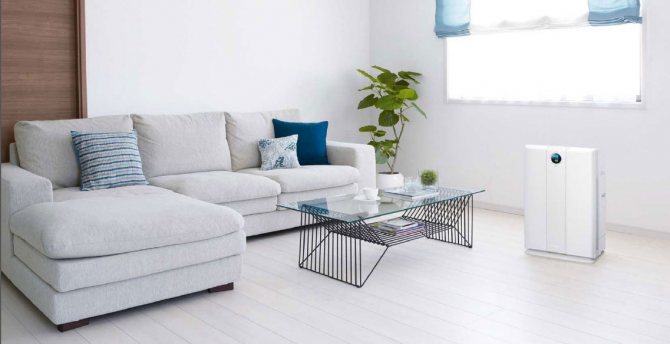

The "critical" period of high humidity occurs just in the off-season, when it is still quite cold and damp outside, and the central heating is turned off in the houses. In autumn, spring and summer, when the heating is not working and the batteries do not dry the air, the humidity level can rise up to 90%. Whereas in winter it usually does not exceed 50%. Owners of private houses, apartments on the ground and semi-basement floors, and corner apartments with non-insulated walls especially suffer from high humidity. If the house is located near a pond or pool, the humidity level will be even higher.
A dehumidifier is the simplest and most effective way to regulate the humidity level in a room. For production and storage facilities, public swimming pools, there is a special technique - dimensional stationary dehumidifiers. For apartments and houses, manufacturers offer compact and mobile household models that collect excess moisture inside themselves. With its help, it is possible to improve ventilation functions, increase the service life of the building as a whole, get rid of fogging of windows, save and prevent damage to property and furniture from mold and mildew.
Do-it-yourself dehumidifier for an apartment
Why do you need to buy an air dehumidifier, if you can independently and quite easily construct it from improvised means and at home.
The first way
- Arm yourself with glass or plastic containers with a volume of 0.5 liters.
- Next, pour ordinary salt into the container, about half.
- To eliminate unpleasant odors in your home, add a few drops of your favorite essential oil to the salt.
- Place these containers in areas most prone to high humidity.
- Change damp salt as needed.
Second way
- Take two 2 liter bottles.
- Cut the first bottle in half; you need both halves.
- Carefully make two holes in the lower half with a red-hot sharp object for future air release.
- Then fill the container with silica gel, a filler used for cat litter.
- Take the top half without the lid and close the throat hole with a bandage folded in several parts.
- With the neck down, place the top on the bottom.
- Cut off the bottom of the second bottle.
- Place a small fan from the computer processor into the opening so that it draws air into the bottle through the neck and passes it through the desiccant.
- Put this bottle with the neck up on the first one, secure the structure with electrical tape.
The dehumidifier is now ready for use. After a couple of days, the filler must be replaced with a new one or dried under the influence of high temperatures.




